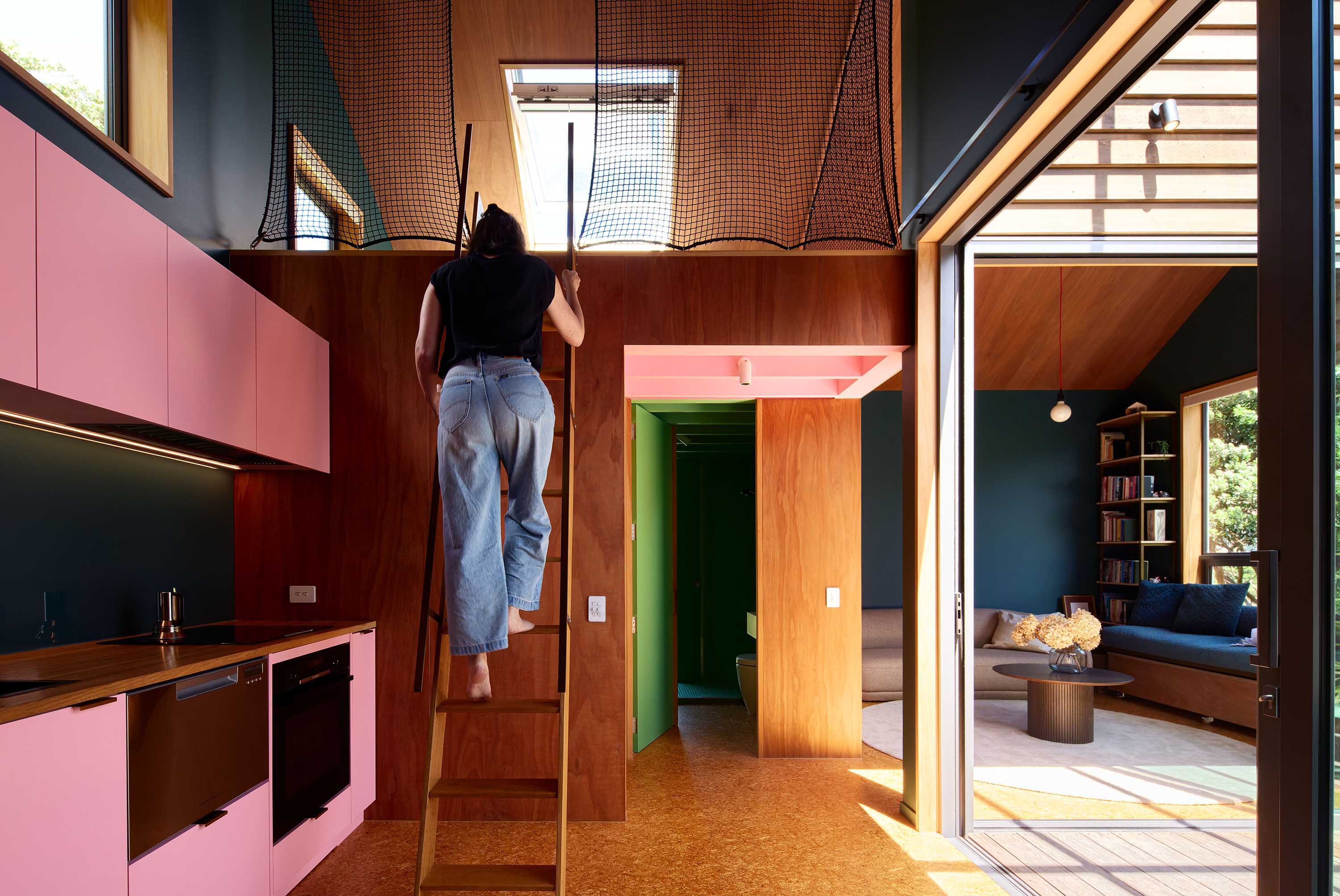

In 1947, New Zealand introduced the Housing Improvement Regulations designed to enhance the quality of housing in Aotearoa by mandating a series of standards: ceiling heights, materials, room sizes. James Warren, of Upoko Architects, has been fascinated with the regulations for years. “We focus so much on the Building Act and local town plans,” he says, “but the Improvement Regulations don’t say you need this many rooms, or the rooms must be this size – the number of rooms and the size of them are dependent on the other rooms.”
The approach is particularly useful when designing small houses: a matrix of interconnected rules that allows the building of something compact, but very generous – like the home of Bridget Beale in Island Bay, Te Whanganui–a-Tara Wellington. The internal footprint comes in at precisely 27 square metres, wrapped around a nine-square-metre enclosed deck.
Beale was not long returned from several years in London when she got in touch with Warren. It was 2021, the height of the real-estate boom, and she’d seen a small house in Punakaiki, on the West Coast of the South Island, that Warren had designed. In London, she had spent a period living in a studio apartment – “Oh, let’s be honest, it was kind of a glorified bedsit and it wasn’t very nice” – which had become somewhat of revelatory experience. “I realised I really liked living small,” she says. “I just really relished coming home, closing the door and being in my own space.”
She initially contacted Warren with an unusual brief: an architecturally designed tiny house, which she planned to park up on rented land up the Kāpiti Coast. Warren got quite far down the track – including working out the weight of the house, which was a novel experience for him – before Beale realised she really would rather be in the city, and near family. Which led, eventually, to a tiny 170-square-metre section at the top of a cul-de-sac in Island Bay. It is one of two bits of land subdivided off the front of an existing property, with views of established pōhutukawa, and a public walkway above the site, along the northern boundary. It is an enormously difficult spot, with numerous overlays and covenants that constrain its buildable area in multiple dimensions.
Once he’d mapped out those various restrictions, Warren was left with just enough room to build a 6x6-metre house, with a tall pitched roof. He has been working to a 3x3-metre grid for a number of years now: it makes for an efficient use of materials, and creates rooms of a decent size without wasting space, “as long as you get the circulation right”.
“You need to make a few basic decisions early on,” he says of the design approach. “One of the fundamentals with a house like this is: do you want somewhere to step outside?” Often, on a sloping site, the living area is raised up in the air to reach the sun, but then you can’t access the outdoors. Here, Warren placed a sheltered, enclosed courtyard – a full quarter of the 6x6-metre grid – on the north-east corner, creating an entry.
Given the house sits right next to a public walkway, and will one day have another house in front of it, the courtyard risked being exposed. So Warren wrapped it in tall operable shutters, which can be opened and shut in a variety of ways, depending on the time and weather, allowing Beale to follow the sun over the course of the day. If she’s working from home, she might open one or two to get a bit of a view but still retain privacy from the walkway. It’s so private, there’s even a bath hidden in the deck, which she can use without being seen. At night – and when she’s out – Beale locks it all down tight, using a gate on the northern corner as a de facto front door. “I feel like I’m outside, but I’m safe in my own house,” she says. “It’s just such a feeling of homecoming and security.”
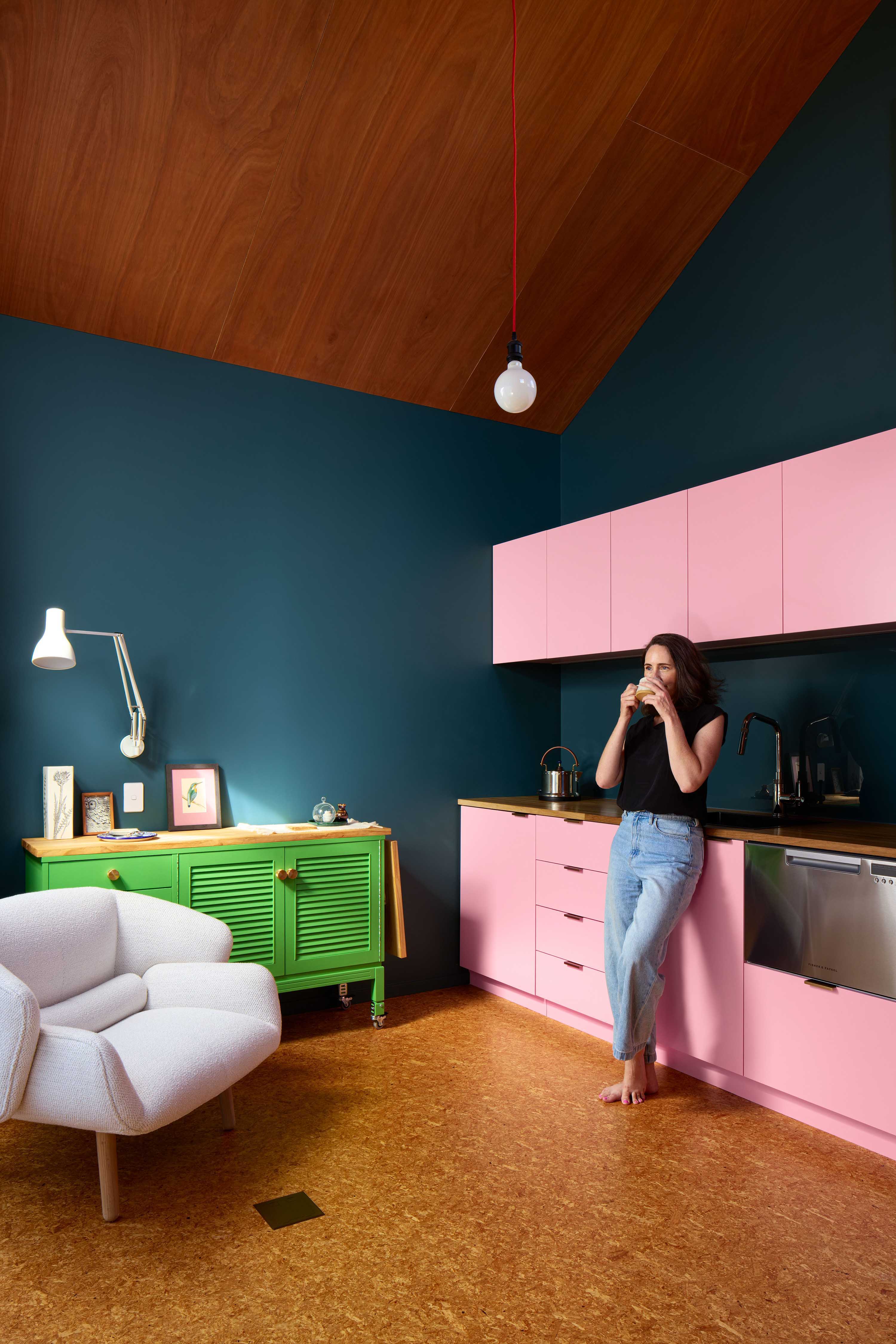
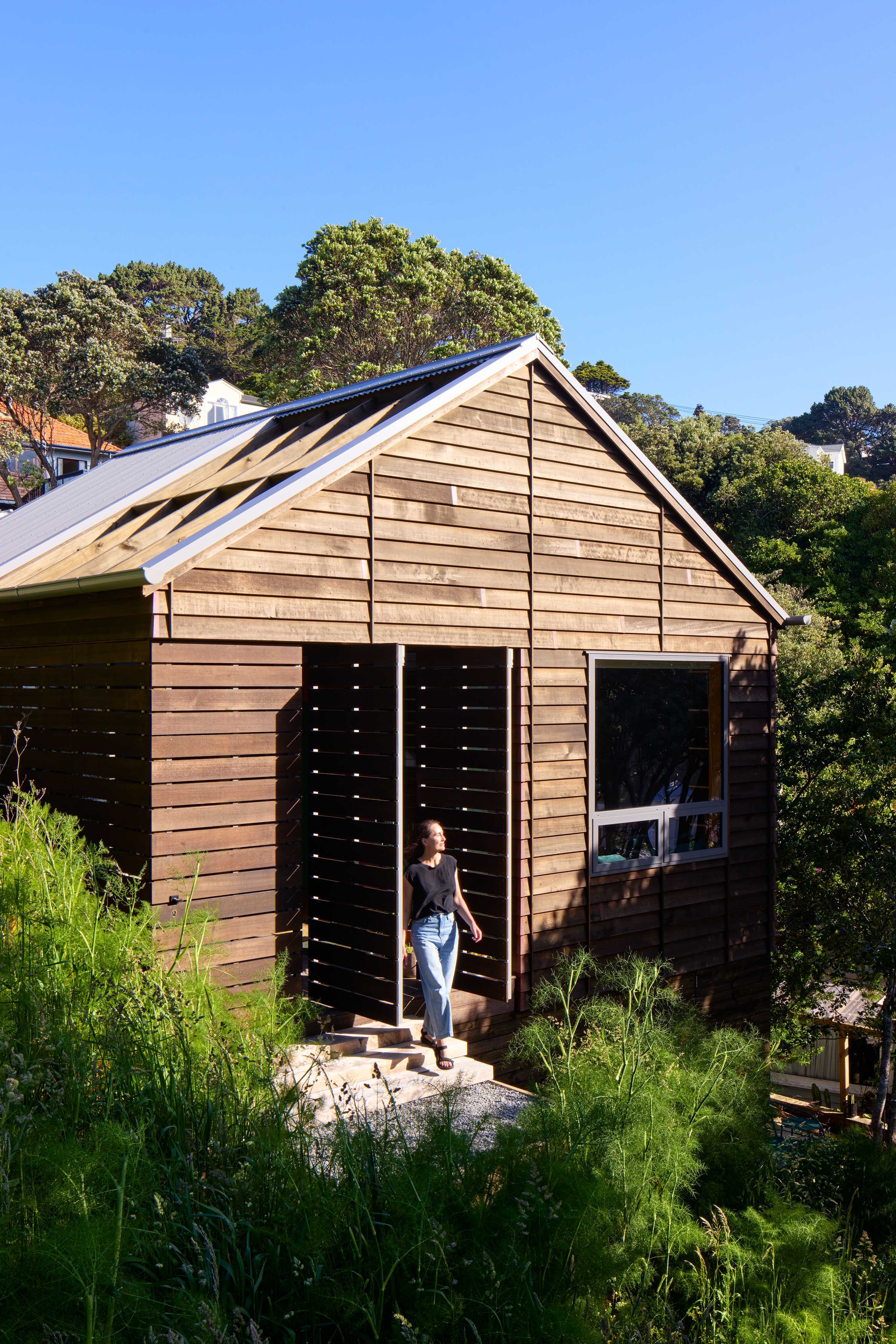
To make the house work, Warren dug down into the section, placing a series of retaining walls behind it and dropping the floor level. From inside, you look up through the open void over the courtyard at a nearby ridge, taking in the maximum view of the sky. When you stand on the public walkway, your eyeline is level with the head flashing of the courtyard wall.
The rest of the house plan pivots off that (and this is the key), a series of rooms that are nothing but generous. The approach, guided by those Building Regulations, allows for a series of full-sized, thoroughly practical spaces, rotating around the generous courtyard. There is light, and views out through pōhutukawa, and there is a constant view of the sky. There’s a generous living area to the north-west, a full-sized kitchen to the south-east, and a utility box containing a bathroom and multi-purpose room on the south-west corner that Bridget uses as a wardrobe but could be a study or small bedroom.
There’s no hallway, no front door, no kitchen island – all the spaces and all the edges are active, opening onto the courtyard through full-height sliding doors. You enter on the diagonal – across the courtyard and directly into the living areas. “There are many small houses you can go to,” says Warren, “and the first thing you’ll think is, ‘Well, this is a small house.’ But when you go here, it’s not the first thing that occurs to you.”
The house is clad with rough-sawn yellow cedar. Warren considered a number of cladding options including corrugated steel, but was worried about what he calls the doll’s-house effect. “I didn’t want it to look like a hobby house down the bottom of the garden,” he says. Initially, it was to be western red cedar, but when supply-chain issues blew out the cost, they switched to more cost-effective yellow cedar, in short lengths of wide weatherboard, marked out with vertical battens. It does not look like a doll’s house. “There’s something about the geometry of it,” says Warren. “As soon as you put those vertical patterns over the horizontal, it creates shapes within the weatherboards, and gives it a sense of scale.”
Inside, the spaces flow easily. There are multiple sightlines through the house, which make it all feel much more generous than it is – helped by the stained timber and dark-blue walls. “There’s this consensus that white makes a space feel bigger,” says Warren. “But I’m a bit dubious of that. I think sometimes dark is better than light, because you can’t see it. You’re not aware of the limits of the space – you don’t get the shadows and you don’t see the edges in your peripheral vision.” To this, Beale added a soft-pink kitchen, and a bright-green bathroom, including a generous shower lined with swimming-pool tiles.
When we visit, there’s a sense of calm. Beale makes a coffee, and serves almond croissants, pulling out built-in sofas from under a window seat, but preferring to sit on the floor. The courtyard has been washed clean by recent rain; the shutters are closed to the walkway but open to the trees. It’s delightful. “I always find myself saying to people that it wouldn’t be for everyone, but it’s right for me, which is a bit silly, really,” says Beale. “It doesn’t feel like a compromise. It feels spacious and luxurious. It just works perfectly.”


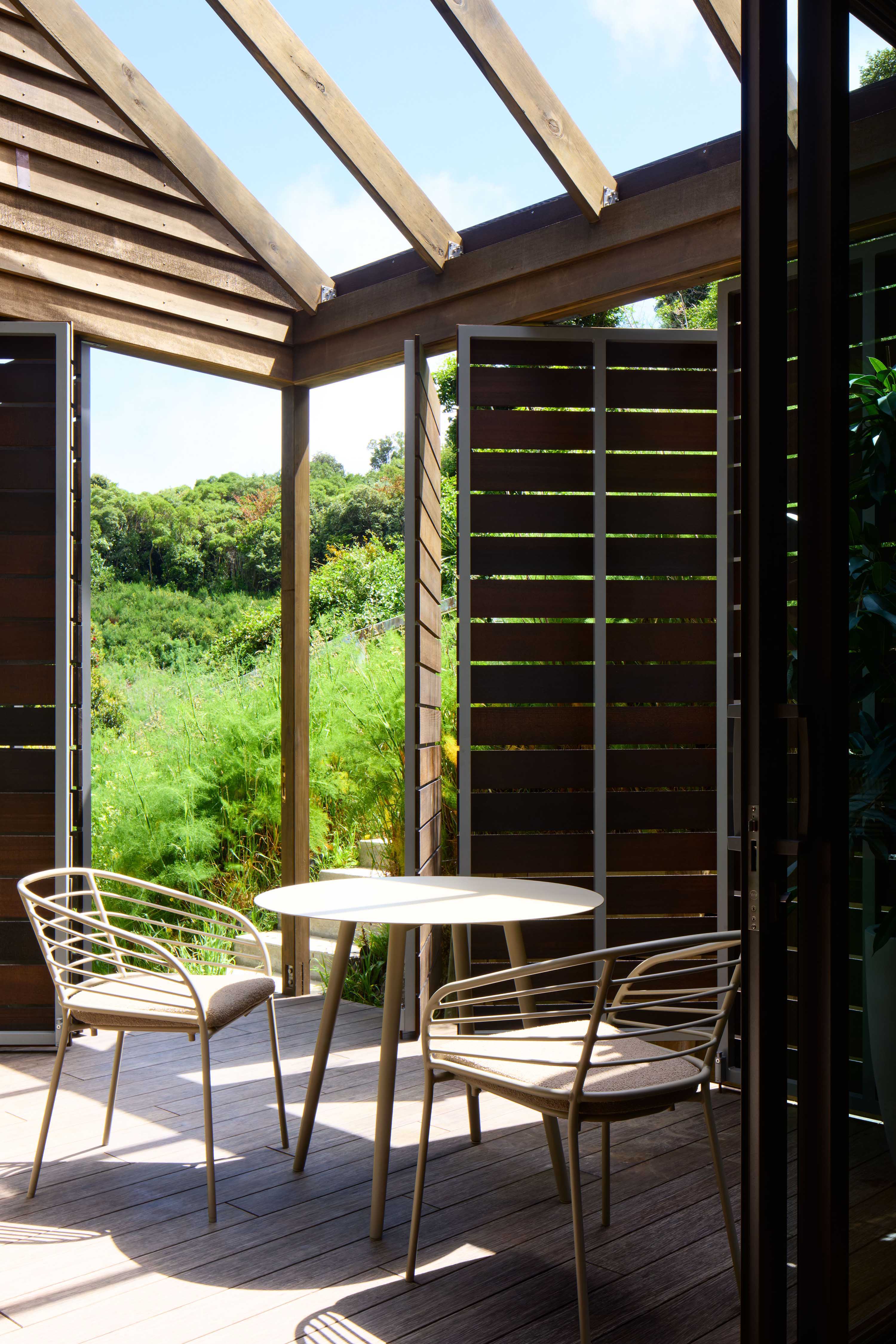
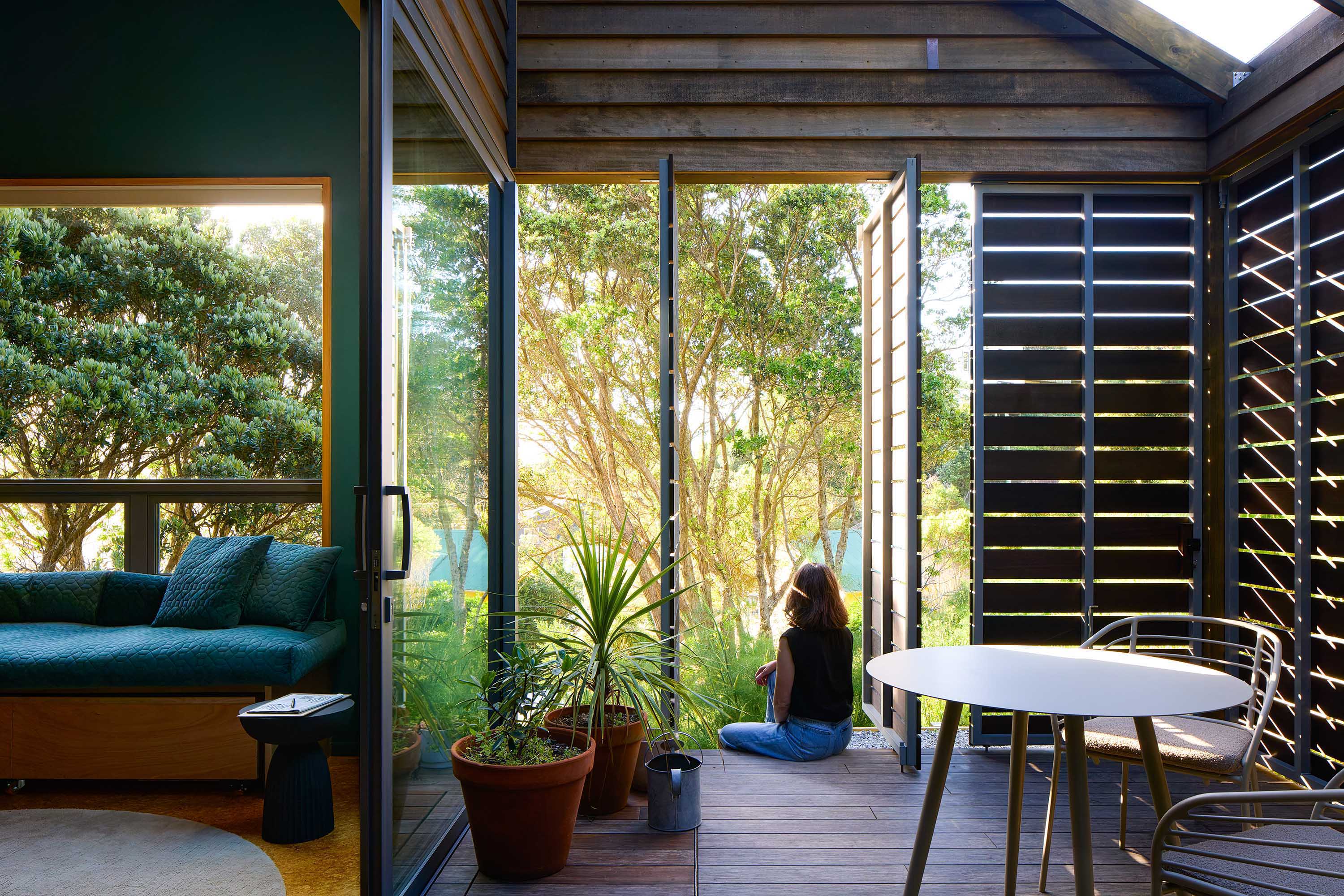

1 Entry
2 Courtyard
3 Dining
4 Kitchen
5 Ladder to Mezzanine
6 Living
7 Bathroom
8 Multipurpose Room